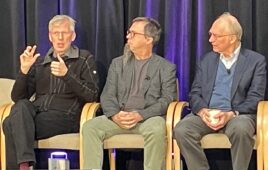While talk of 6G has already started, 5G has moved into applied research. Students at WPI work with Professor Alex Wyglinski to connect IoT devices and vehicles to 5G networks.
Now that 5G is coming online around the world, it’s time for engineers and engineering students to connect devices other than phones phones. While 6G research has begun, the real work is in developing IoT devices that can improve people’s lives. Students and faculty at Worcester Polytechnic Institute (WPI) have turned to that kind of applied research. Professor Alex Wyglinski leads graduate and undergraduate students in such work.
“IoT is going to become critical in the years to come,” said Wyglinski. He pointed to two visiting PhD students from Senegal who have come to Worcester, Mass. to study how to connect devices to 5G networks. Why 5G in Senegal? Because that’s the technology that will be installed there. Many parts of the world have no wireless infrastructure and 5G will be the first to appear. According to Wyglinski, many IoT devices won’t connect directly to 5G networks, but will use an intermediary such as LoRa because of its long range an because battery life is so important. 5G devices tend to run hot. “Agricultural IoT will be important,” he said.

Visiting graduate students work with WPI students to connect agricultural sensing devices to 5G networks in Senegal. Image courtesy of WPI.
In addition to agriculture, Wyglinski sees smart roads coming. “Right now, we have Radar and Lidar, but we need to make the jump to smart roads that can track and communication with vehicles.” He also see lots of IoT devices monitoring structural health, manufacturing, and environmental conditions. Indeed, we’re already seeing that with IoT devices connected to LoRa and Wi-Fi networks.
Undergraduate students, working on their major qualifying projects (MQPs) are building 5G base stations and the IoT devices that connect to them. Graduate students are looking into cognitive radio, using machine learning to develop radios that adapt to their environment “on the fly.”
In the video, Wyglinski covers these and other topics surrounding 5G research.







IOT for future